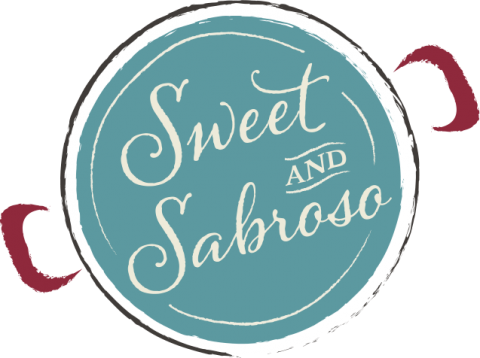We recently traveled to Seville (Spanish: Sevilla), the capital of Spain’s southern region, Andalusia (Spanish: Andalucía). It’s a magical place with a rich architectural and cultural heritage, fabulous tapas and Sherry wine, flamenco and a wealth of orange trees adorning the streets as far as the eye can see. It’s no surprise that Seville has been named one of the top 10 places to visit in 2018 by Lonely Planet!
Here are the 7 things we love about Seville!
1. The Cathedral of Seville and Giralda
Located in the heart of the city, one of the top attractions in Seville is the Cathedral of Seville (Spanish: La Catedral de Sevilla). Designated a UNESCO World Heritage Site in 1987, this Gothic marvel is among the largest cathedrals in the world and is emblematic of the cultural blend that characterizes the region of Andalusia.
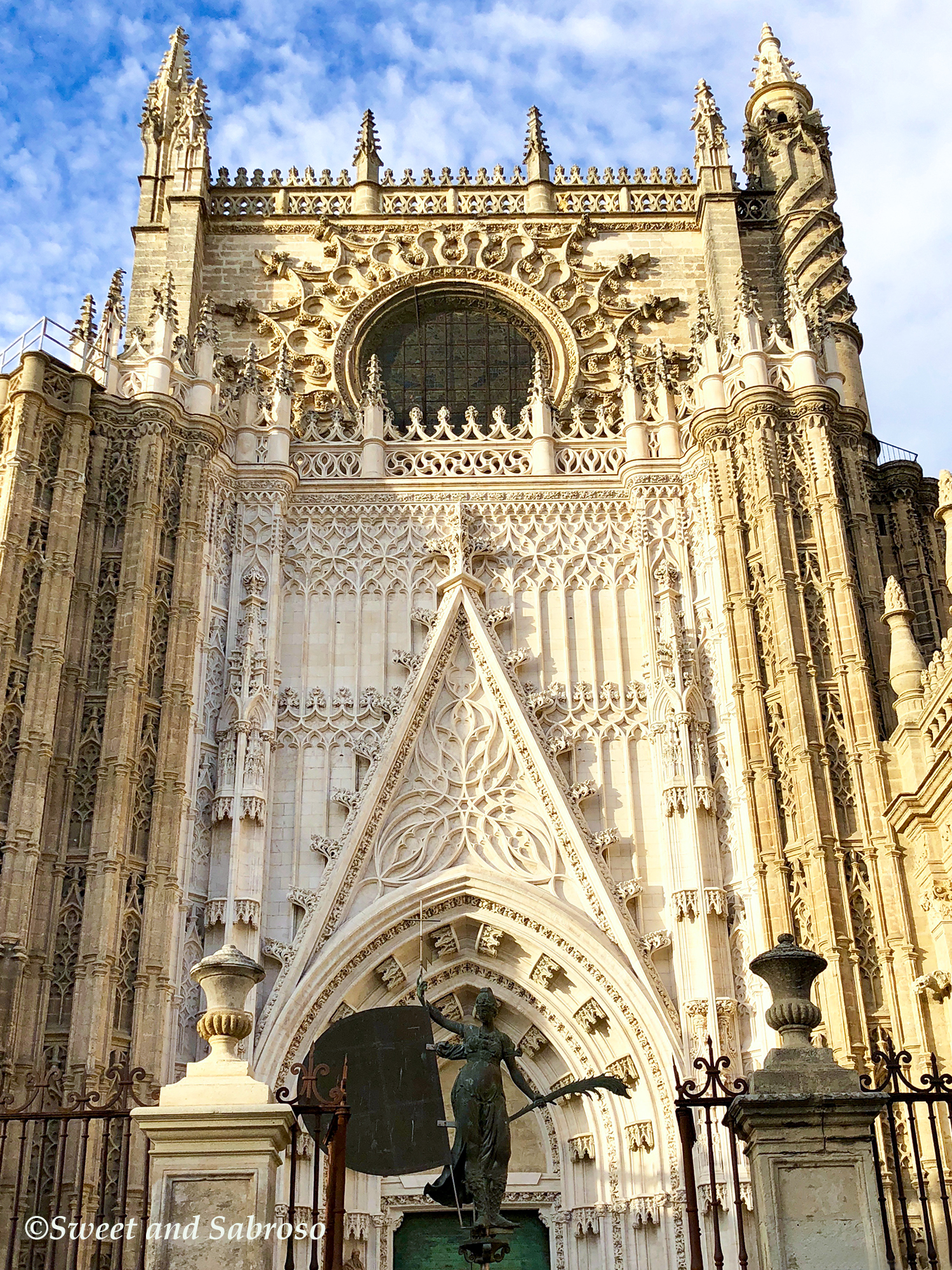
Cathedral of Seville
The Cathedral of Seville was originally the site of a great mosque constructed in the 12th century by the Almohads, the then-ruling Moorish dynasty. After Christian rulers obtained control of Seville, with significant reconstruction that lasted over a century (1401 to 1506), the mosque was converted to a cathedral. A few elements of the Cathedral’s Moorish roots were preserved, including, most notably, the Giralda (Spanish: La Giralda).
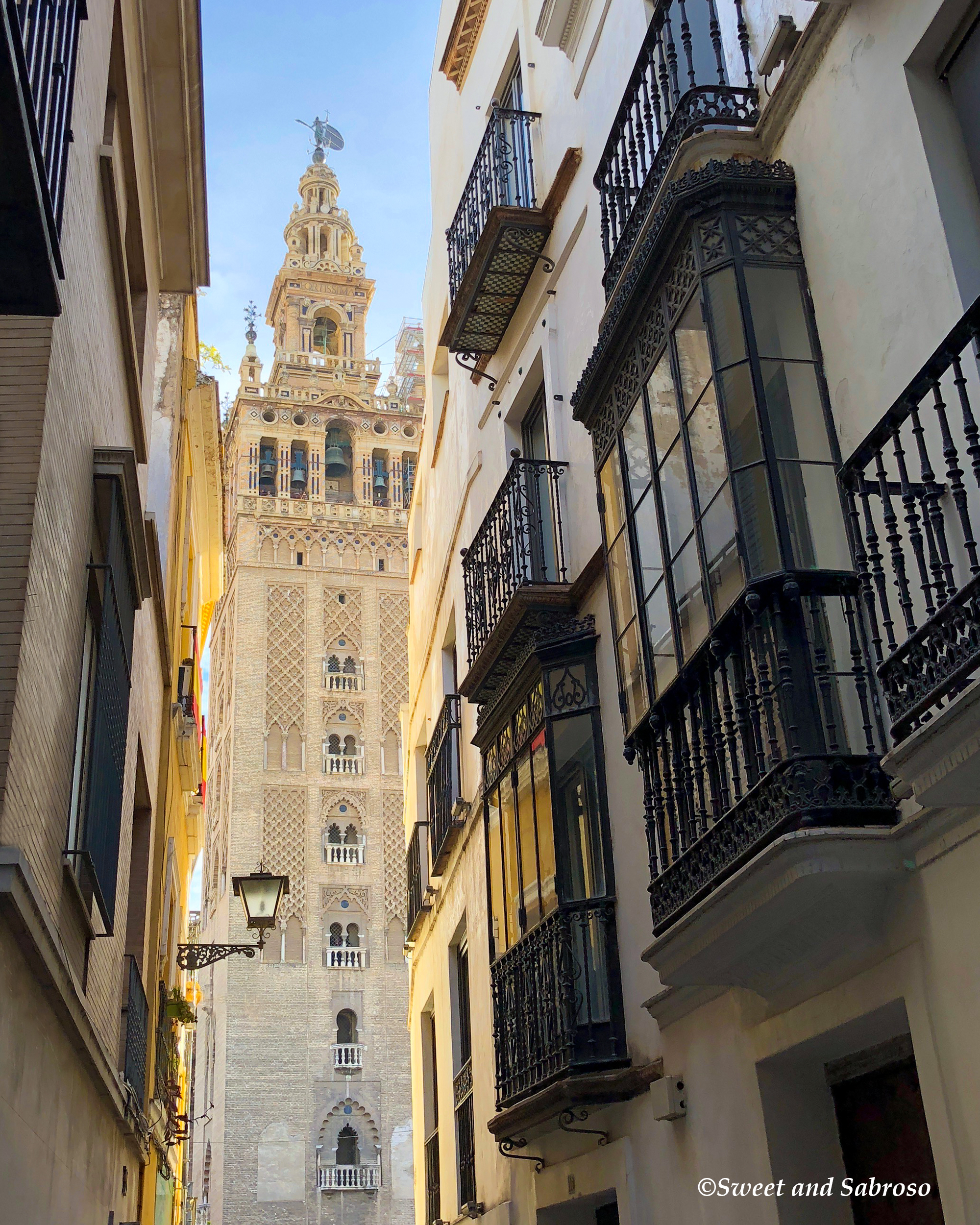
The Giralda as seen through the streets of Seville
The Giralda was originally a minaret during the Moorish period and now serves as the Cathedral of Seville’s bell tower. It makes its remarkable presence known throughout the city!
Just inside of the Cathedral, the museum’s collections include the tomb of Italian-born Spanish explorer Christopher Columbus (Spanish: Cristóbal Colón).
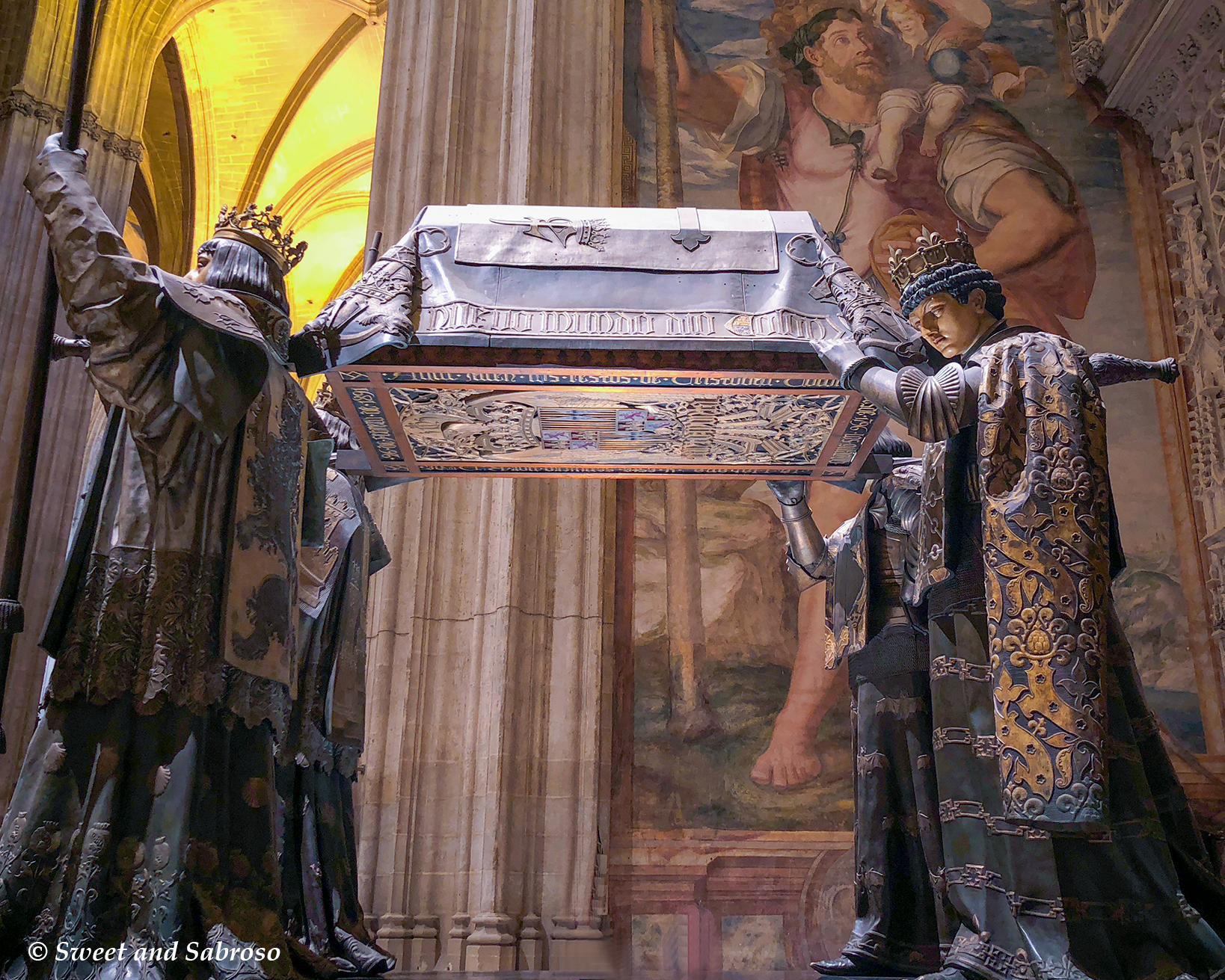
Tomb of Christopher Columbus, Cathedral of Seville
The tomb is held by four figures representing the kingdoms of Spain at the time: Castile, Aragon, Navarra and Leon.
Finally, if you have the energy, it’s well worth the effort to climb to the top of the Giralda for the spectacular panoramic view of the city!
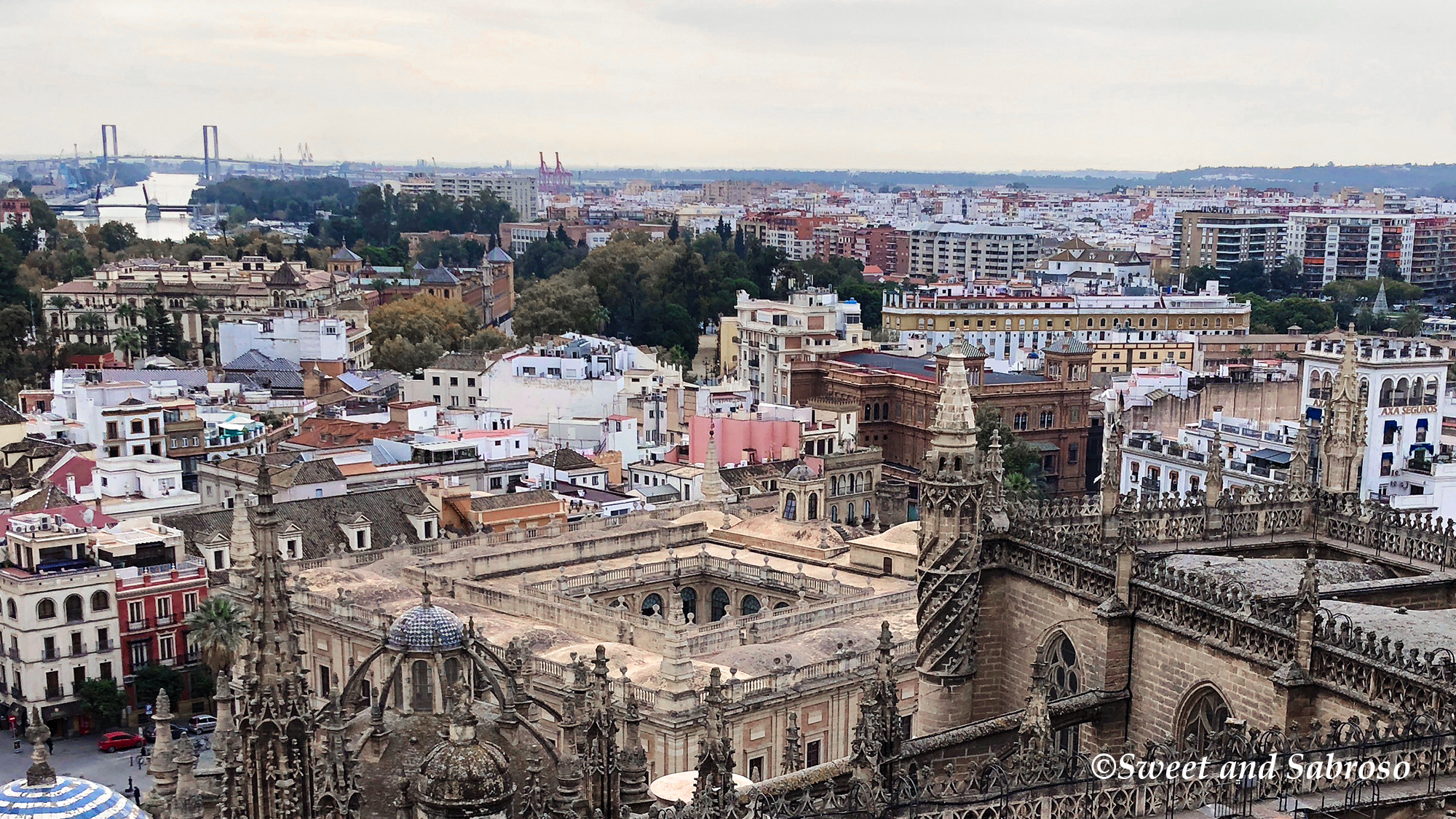
View of Seville from the top of the Giralda
Sources and additional information:
- www.catedraldesevilla.es (in Spanish only as of the date of this post)
- www.andalucia.com/cathedral
- www.andalucia.org/cathedral
- www.andalucia.com/giralda
- www.andalulcia.org/giralda
2. Seville Orange Trees Decorate the Streets
Another of the city’s popular attractions, which are as symbolic of Seville as its monuments, are the beautiful and fragrant orange trees that decorate the city streets.
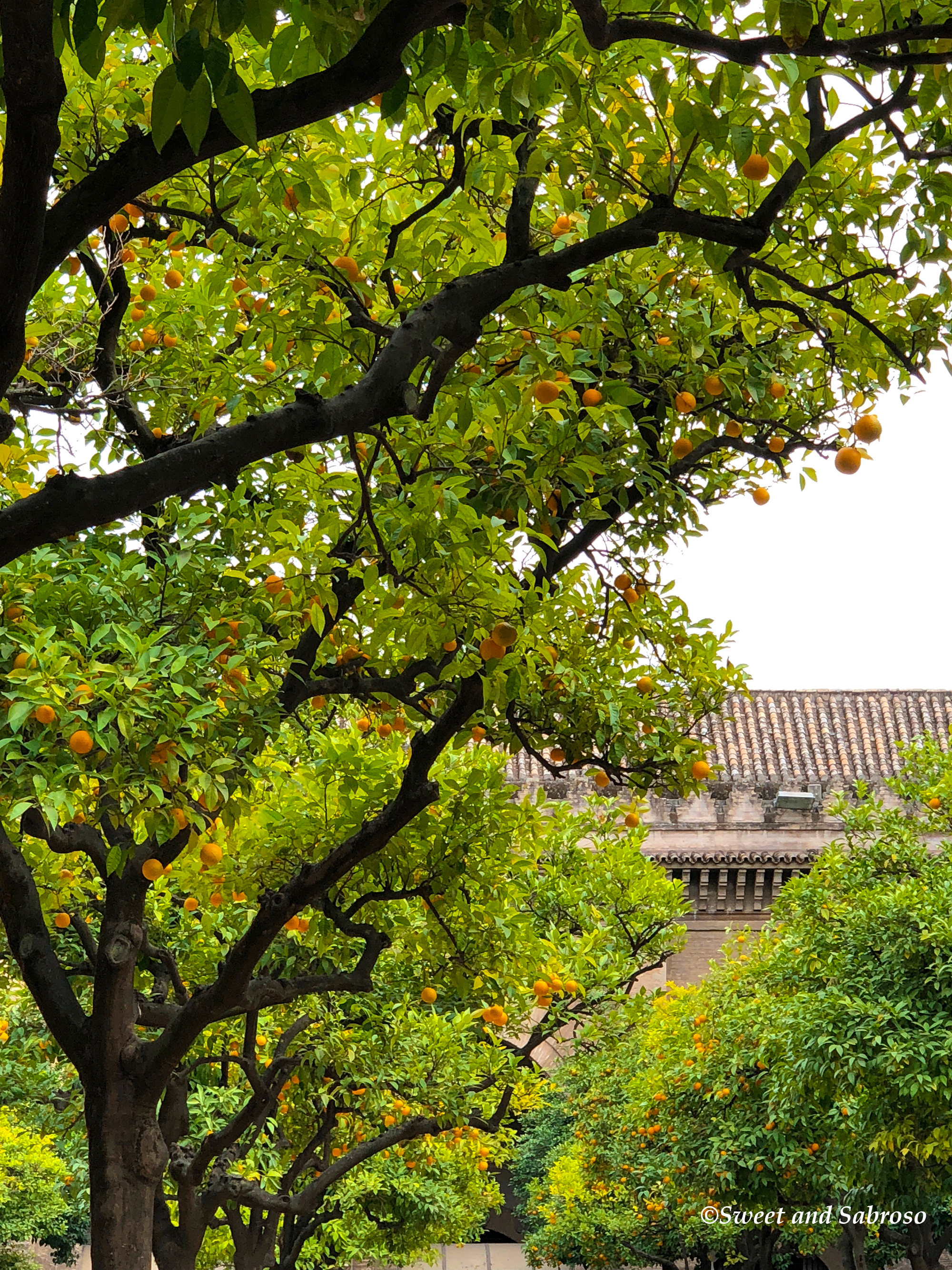
Seville orange trees in late November
These oranges, which have become known worldwide as Seville oranges, originated in China and were subsequently introduced to Spain by the Moors in or around the 10th century. Also referred to as bitter or sour oranges (Spanish: naranjas amargas or naranjas agrias), these oranges are not meant to be eaten fresh, but rather, their juice, rinds and/or flowers are used for cooking, beverages, perfumery and medicinal purposes. The oranges begin to appear on the trees in the late fall and are later followed by sweet-smelling blossoms in the spring.
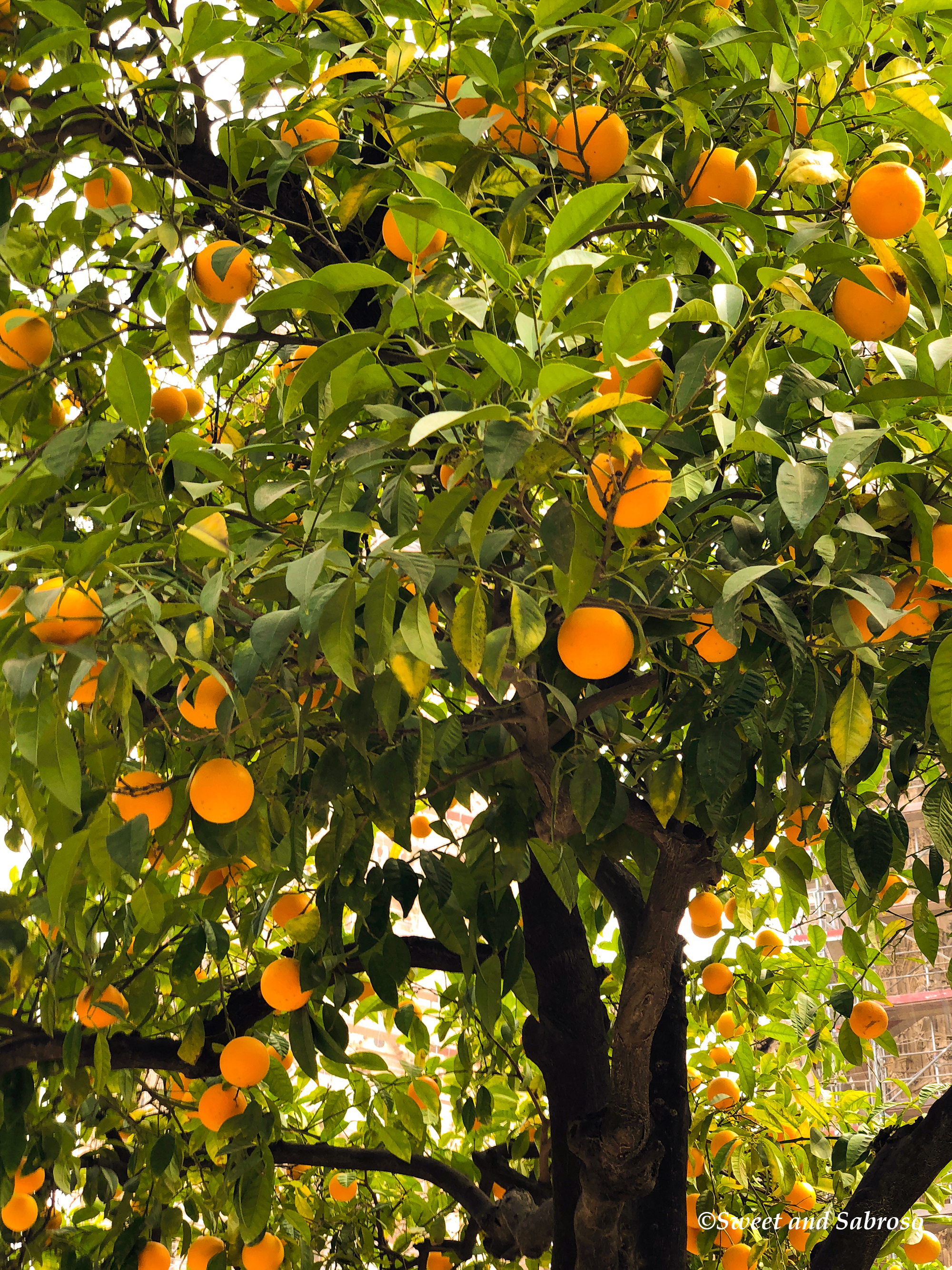
Seville orange trees in late November
Seville oranges are exported from Spain throughout Europe as well as to Great Britain where they are used to make Seville Orange Marmalade. Seville orange juice is also a key ingredient in Cuban cuisine, including the popular Cuban Mojo Criollo (Cuban Garlic Sauce). In the United States, Seville oranges are grown on a small scale and can be purchased from speciality markets or from certain growers directly.
Sources and additional information:
3. Mimo Sevilla and Tour to Jerez de La Frontera
One of the absolute highlights of our trip to Seville was our day trip to Jerez de La Frontera organized by Mimo Sevilla, one of several locations in Spain of Mimo Food, a pioneering food company specializing in cooking courses, gourmet retail and culinary tours.
Famous for its Sherry and brandy production, its equestrian tradition and flamenco, Jerez de la Frontera (usually shortened to Jerez) is about an hour outside of Seville in the province of Cádiz and makes for an incredible day trip! It’s an enchanting place that seems frozen in time, yet it’s sprinkled with newness and innovation that seamlessly blend with its old-world charm.
Our tour with Mimo Sevilla included a visit to a traditional, family-owned bodega, Bodegas Agostado, in nearby Puerto de Santa María, where we met the owner and had a merienda (snack) consisting of local pastries paired with various of the bodega’s Sherries.
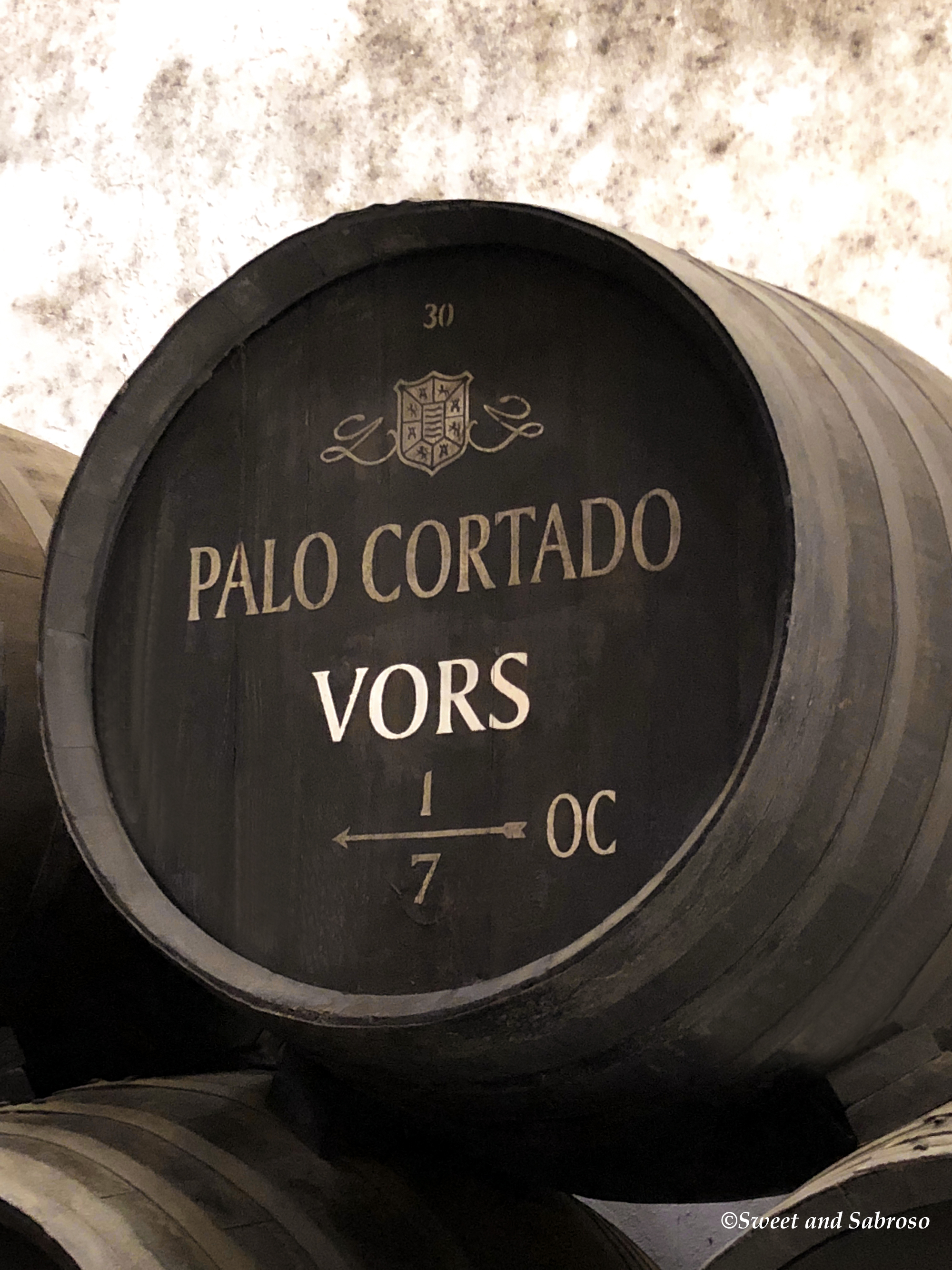
Bodegas Lustau Palo Cortado VORS (Very Old Rare Sherry) Cask
We also visited the more modern and renowned Bodegas Lustau, where we toured their impressive facilities and enjoyed a formal tasting of a dozen of their Sherries in a range of styles.
Our tour concluded with a lovely lunch (and more Sherry pairings!) at El Carboná, a former bodega that was converted to a restaurant, which serves delicious updated traditional cuisine and is considered one of the best restaurants in Jerez.
4. Tapas at El Rinconcillo
There is no shortage of great food and tapas in Seville, but there’s only one bar with a claim to fame for being the oldest tapas bar in the city: El Rinconcillo, founded in 1670.
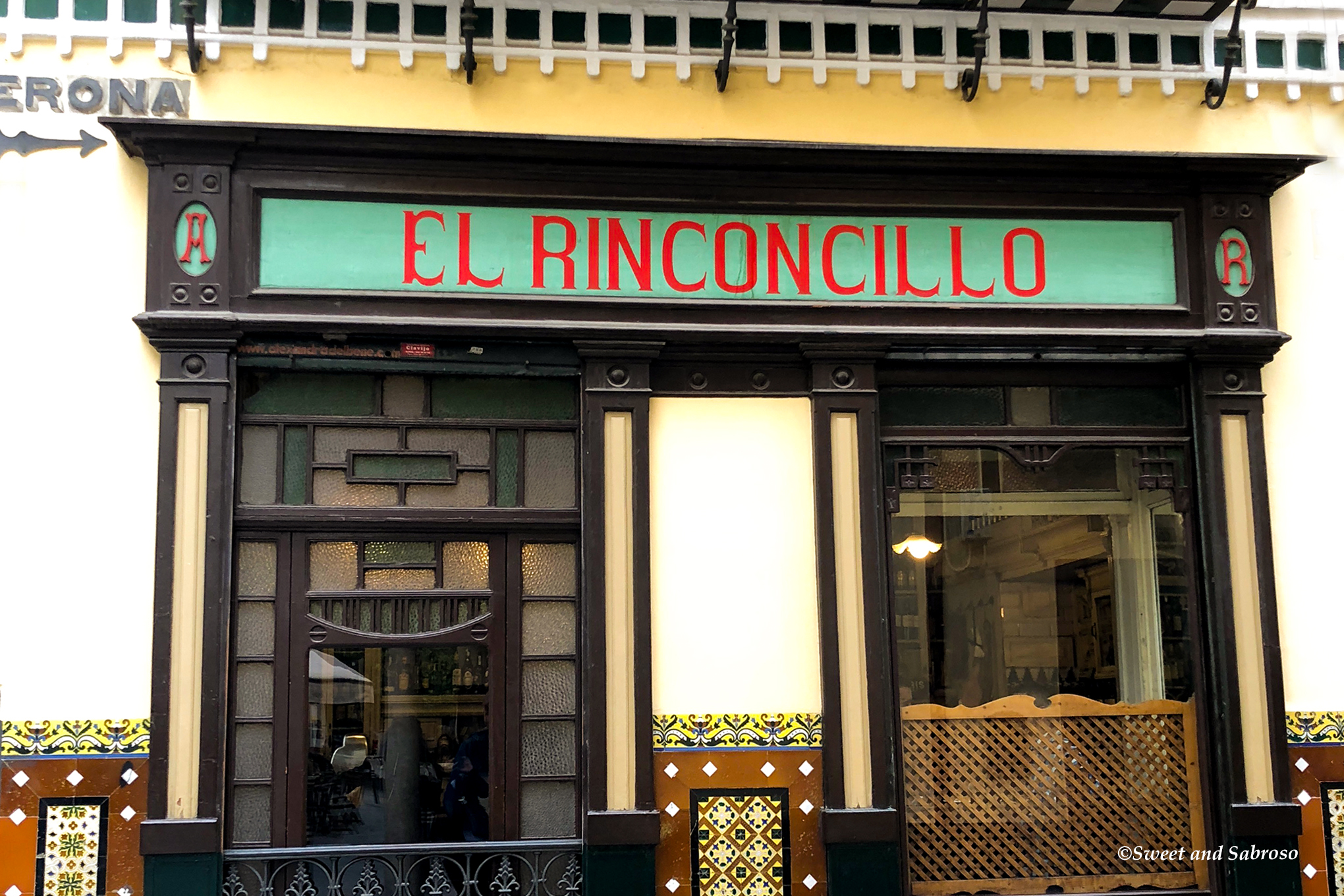
El Riconcillo
Although El Rinconcillo has become a bit touristy (thanks to all the travel websites and guidebook recommendations!), it has retained its old-world charm. Once inside of the bar, you will see waiters dressed in traditional black vests and ties, cured hams hanging from the ceiling, tables made of old Sherry wine casks, and as many locals as tourists enjoying a glass of Sherry with their tapas. We especially enjoyed their fried fish (Spanish: pescado frito or more colloquially, pescaíto frito), a traditional dish typically found in Andalusia (and to a lesser extent in other parts of Spain) paired, of course, with a glass of Manzanilla Sherry.
5. Hotel Alfonso XIII
A Luxury Collection Hotel, this fantastic property was commissioned by the King of Spain to host international dignitaries in 1929. It’s centrally located near the Cathedral of Seville, the hotel staff is super friendly and helpful, and the dining options are excellent (that is, if you want to stay inside!).
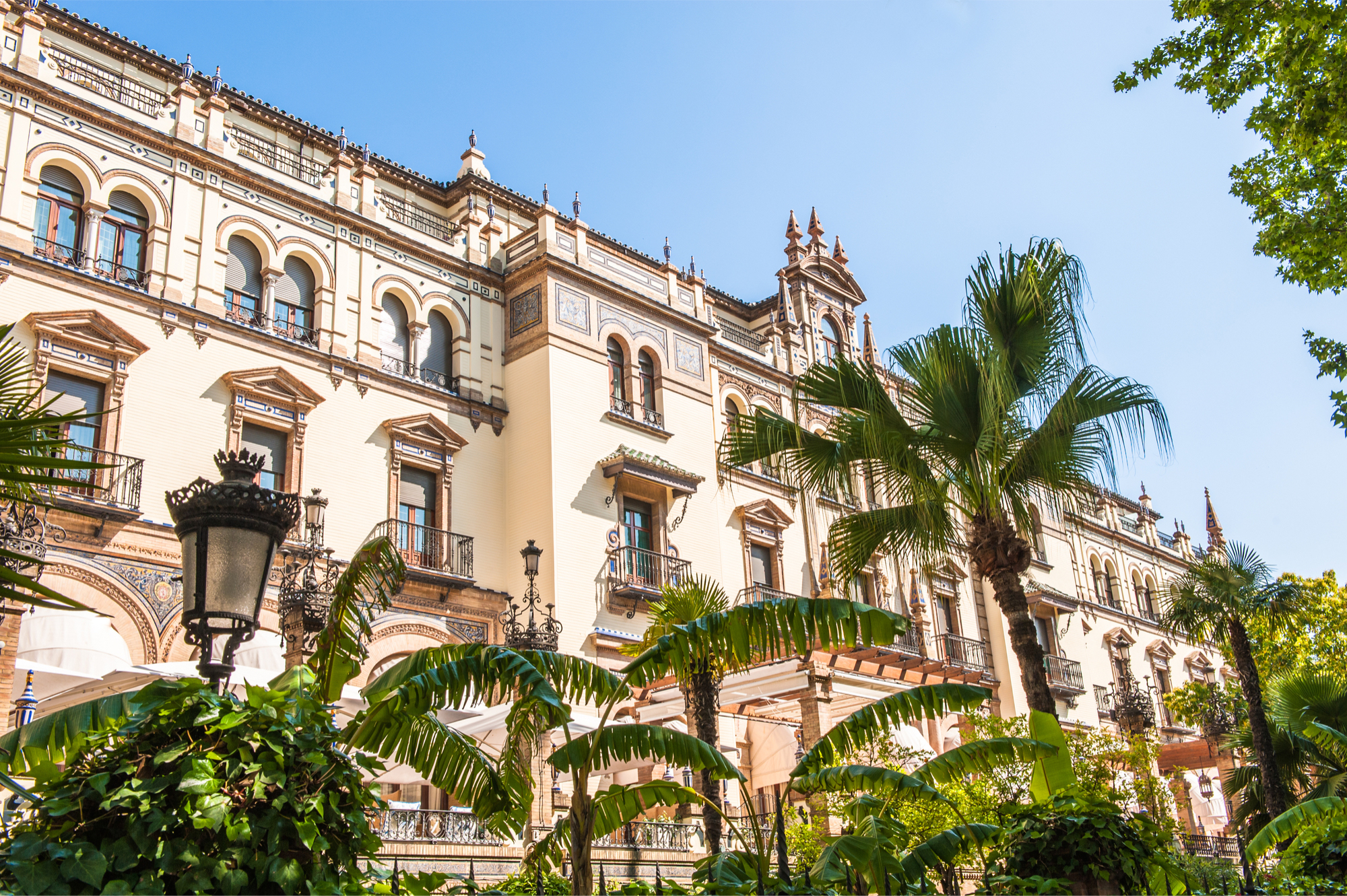
Hotel Alfonso XIII, Seville – photo credit: Anton Ivanov/shutterstock.com
We particularly liked the Andalusian cuisine offered at the hotel’s Restaurante Fernando, and the selection of cocktails and Sherry wines at their elegant, Art Deco-styled, Bar Americano.
6. Traditional Flamenco Shows
Flamenco is the name used to describe a family of music (played especially on the guitar), song and dance styles that was created in Andalusia over several centuries from Gypsy, Moorish, Andalusian and other roots. Although the precise origins of flamenco are the subject of much debate, Seville is commonly considered its birthplace, and as such, the flamenco tradition in Seville is strong and enthusiastically celebrated. It’s the perfect place to experience a flamenco show!
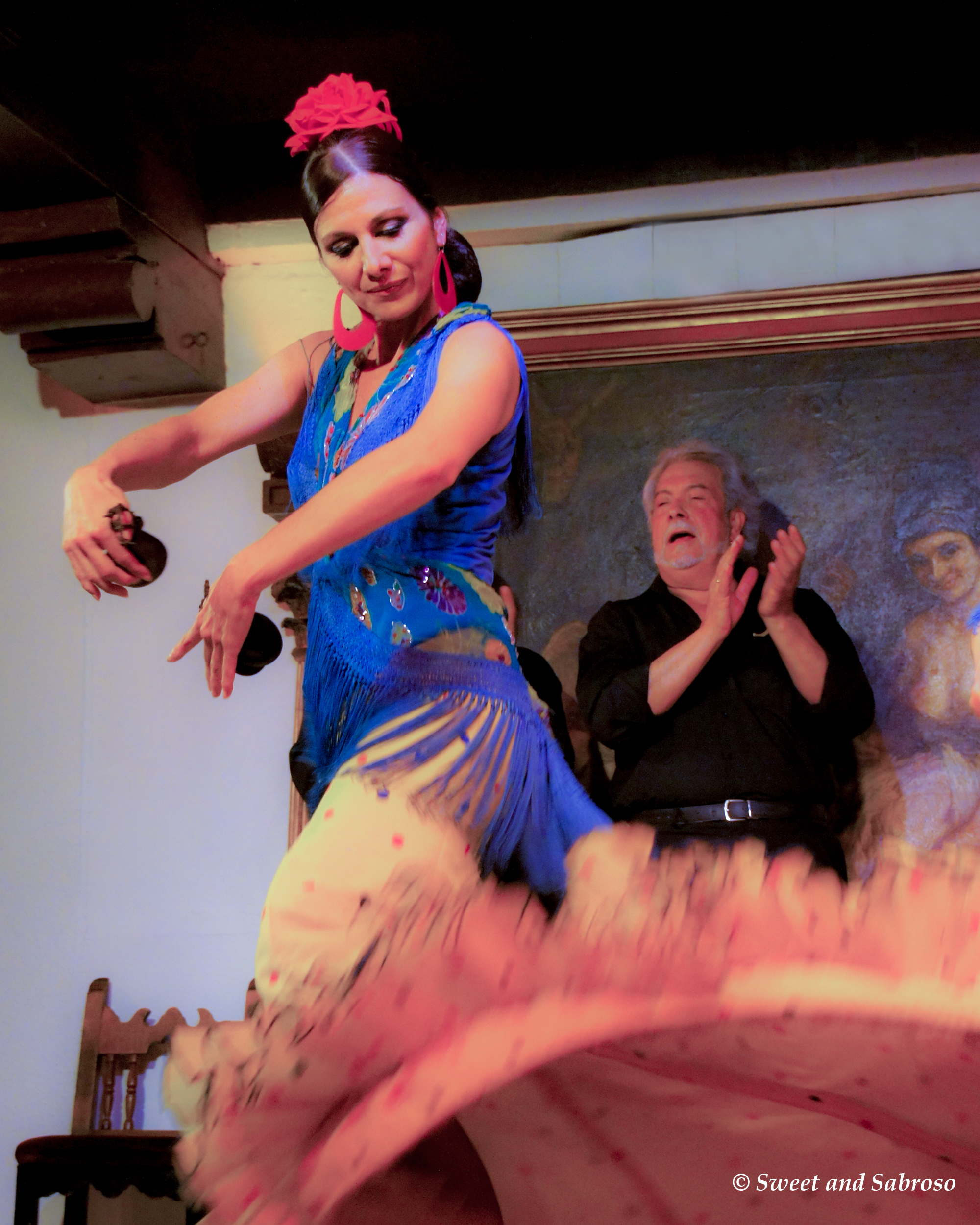
A Spanish flamenco dancer
We attended a terrific show at Tablao El Arenal, which has been around for 40 years and is famous for its authentic flamenco shows.
Also, if you’re interested in a flamenco dress or other flamenco attire, it’s available throughout the city in a range of styles, designs, sizes and price ranges. We purchased a flamenco dress at Nuevo Montecarlo, which even offered us same-day tailoring!
Sources and additional information:
7. Amazing Game of Thrones Filming Locations
Seville has been the site of several spectacular filming locations for the popular television series Game of Thrones, but you don’t have to be a diehard fan of the series to appreciate them! Many of these filming locations are as picturesque and impressive in their own right as their fictional counterparts.
The Royal Alcazar of Seville (Spanish: Real Alcázare de Sevilla), the royal palace of Seville, is as magnificent and opulent as the Palace of Dorne in Game of Thrones. Originally developed by Moorish rulers, the architecture of the Royal Alcazar of Seville represents an amalgamation of Moorish and other cultural influences. Together with the Cathedral of Seville, the Royal Alcazar of Seville was designated a UNESCO World Heritage Site in 1987.
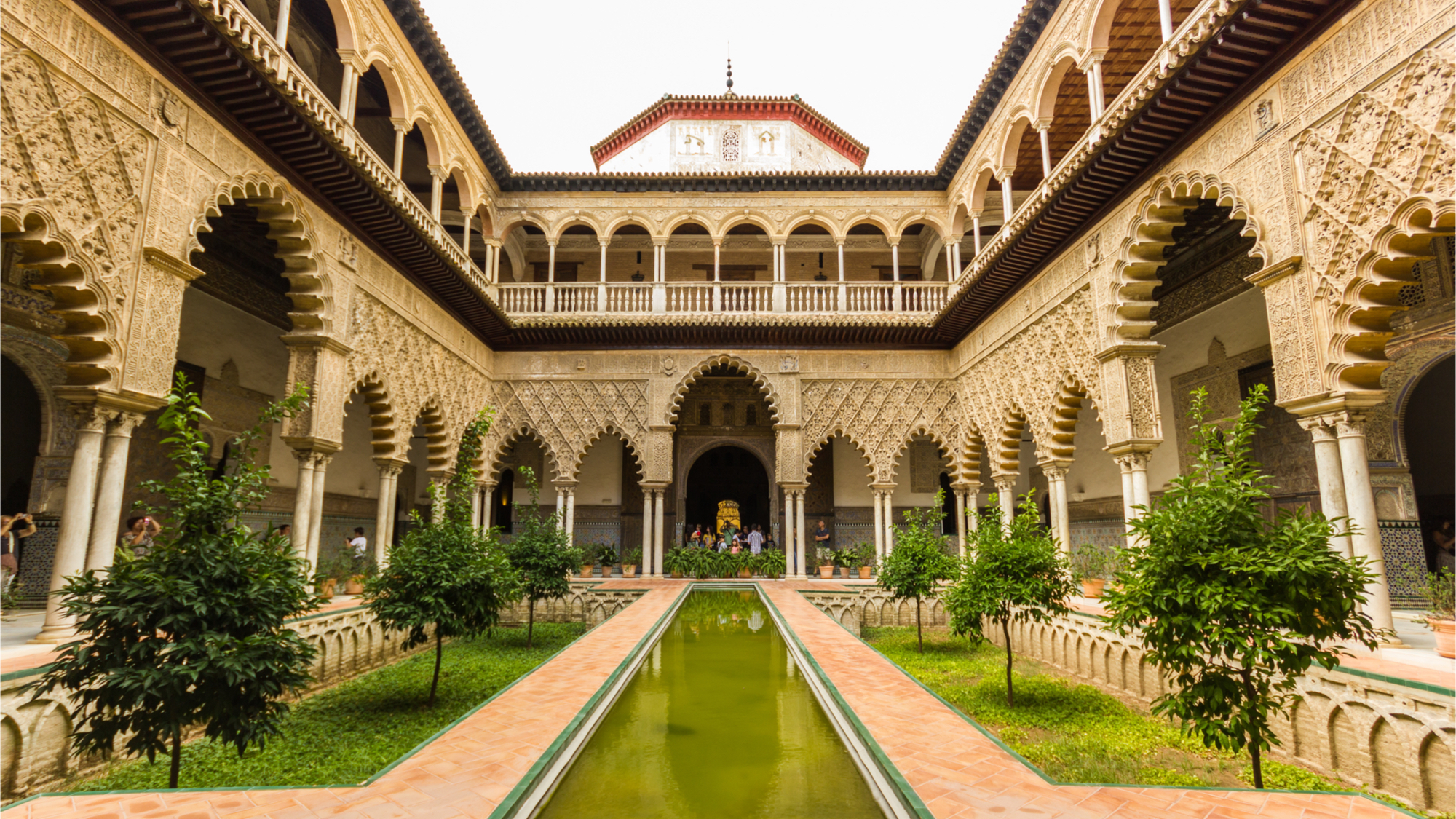
Patio of the Royal Alcazar of Seville (Game of Thrones’ Palace of Dorne)
photo credit: Ronny Bas/shutterstock.com
The Roman Ruins of Italica (Spanish: Conjunto Arqueológico de Itálica), located just outside of Seville in the village of Santiponce, with its extraordinary amphitheater and mosaics, is the site of the King’s Landing Dragonpit in Game of Thrones and where the members of the three major houses met in the final episode of Season 7.
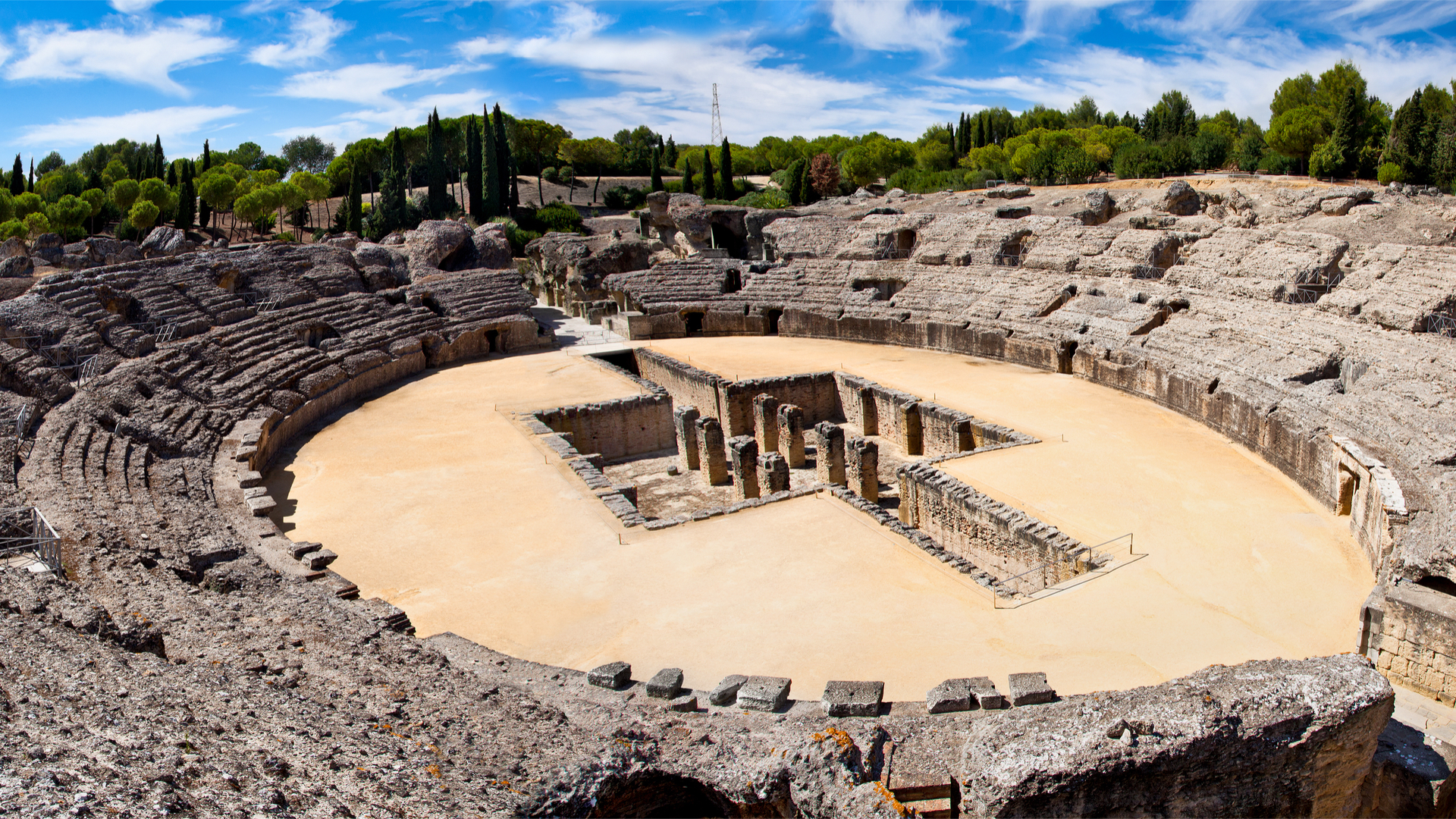
Roman Ruins of Italica (Game of Thrones’ King’s Landing Dragonpit)
photo credit: Aleksandar Todorovic/shutterstock.com
For additional fun facts and information about these and other Game of Thrones‘ filming locations in Spain and worldwide, HuffPost and The Telegraph have each featured great articles, including the following:
From HuffPost:
- 9 Places ‘Game of Thrones’ Was Filmed You Need to Visit Before You Die
- 4 Filming Locations from Game of Thrones Season 7
- This Amazing New ‘Game of Thrones’ Location is Ready for Your Next Vacation
From The Telegraph:
- Spain’s Incredible Game of Thrones Filming Locations
- The Incredible Filming Locations From Season Seven
- Mapped: Every Single Game of Thrones Filming Location
So there you have them – the 7 things that we love about Seville! If you haven’t been to Seville (or have an incling to return), we hope this post has inspired you to make it happen soon. As for us, we can’t wait to go back!
Thank you for visiting!
!Salud!
